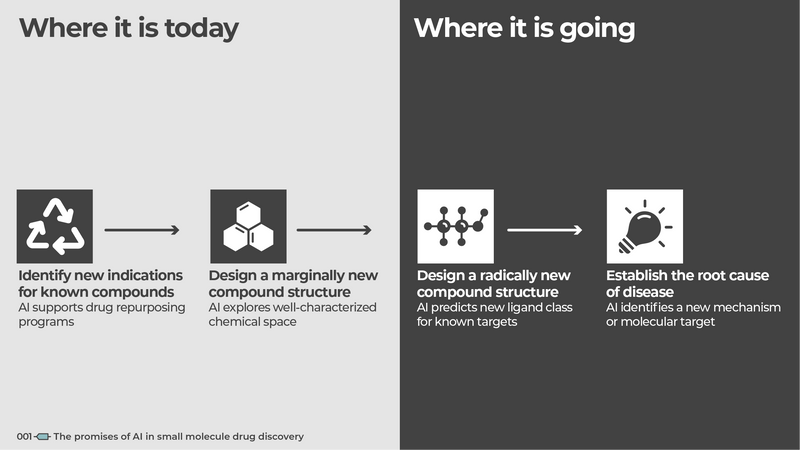001
The promises of AI in small molecule drug discovery
An immediately obvious application is repurposing existing molecules for new indications. This is particularly evident in phenotypic drug discovery where the data generated from high throughput drug screens makes for a perfect ML use case.
Next, you have generative ML tools that are able to explore chemical spaces long studied by medicinal chemists. These tools are then able to generate structurally similar molecules to those already known and, in some cases, approved.
It is likely that chemists would have been able to identify these ML-generated molecules based on traditional approaches. Nevertheless, ML tools may help identify empty gaps and pockets in the IP space and turn marginally novel molecules into patentable material.
Exploring new structural space is where untapped opportunities exist. While we have not seen this yet, one can imagine a radically novel ML-generated molecule working with a well-studied target.
The holy grail here is an ML-predicted mechanism, target, or disease pathway - a goal we are admittedly still far from. This type of work today mostly relies on “disease knowledge graphs” built by scrapping scientific literature with mixed results that only reflect our biases.
